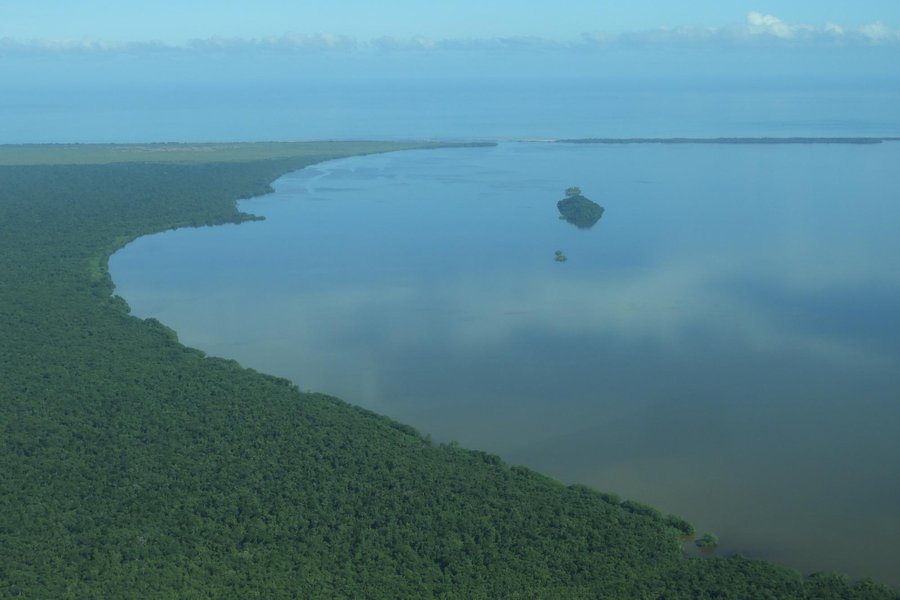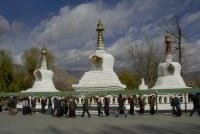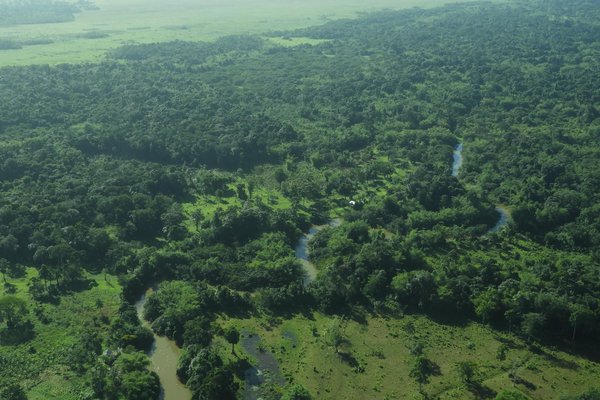Honduras
Rio Platano Biosphere Reserve
The Río Plátano Biosphere Reserve encompasses both mountainous and lowland tropical rainforest, as well as savannahs and coastal plains, full of diverse wildlife and plants.
The river basin holds spectacular lagoons, namely Laguna Brus and Laguna Ibans, many rivers and waterfalls. Endangered mammals like the critically endangered Mexican Spider Monkey, the Giant Anteater, Ocelot and Jaguar can be found in this Reserve, as well as an impressive 411 documented species of birds.
Community Perspective: the few reviewers that have visited it praise the amazing wildlife and the indigenous culture. The truly adventurous have reported on a full descent of the river from the headwaters to the coast.
Site Info
Official Information
- Full Name
- Rio Platano Biosphere Reserve (ID: 196)
- Country
- Honduras
- Status
-
Inscribed 1982
Site history
History of Rio Platano Biosphere Reserve
- 2011: In Danger
- threatened by illegal activities
- 2007: Removed from Danger list
- Significant progress
- 1996: In Danger
- agricultural intrusion and the implementation of land reform programmes
- 1982: Inscribed
- Inscribed
- In Danger
- threatened by illegal activities Since 2011
- Type
- Natural
- Criteria
- vii
- viii
- ix
- x
Links
- UNESCO
- whc.unesco.org
- Official
-
- hondurastips.hn — La Mosquitia
- Related
-
- education-for-conservation.org — Education for conservation and sustainability in the Río Plátano Biosphere Reserve
All Links
UNESCO.org
- whc.unesco.org — whc.unesco.org/
Official Website
- hondurastips.hn — La Mosquitia
Related Resources
- education-for-conservation.org — Education for conservation and sustainability in the Río Plátano Biosphere Reserve
News Article
- May 1, 2021 news.mongabay.com — Drugs and agriculture cause deforestation to skyrocket at Honduran UNESCO site
- Aug. 14, 2019 news.mongabay.com — Rainforest destruction accelerates in Honduras UNESCO site
- July 28, 2011 wilderutopia.com — Chinese dam project threatens Central America's largest tropical rainforest and Indigenous populations in the Moskitia
Community Information
- Community Category
- Natural landscape: Forest
Travel Information
One thousand visitors or fewer
Recent Connections
-
Perfect Inscriptions
1982 -
Over 300 bird species
the impressive 411 documented species o… -
Centres of Plant Diversity
MA15 North-east Honduras and Rio Plátan…
Connections of Rio Platano Biosphere Reserve
- Geography
-
-
Caribbean Sea
-
Estuary
"Starting from the Caribbean Sea, there are estuarine and marine systems, sandy beaches, coastal lagoons of varying salinity, mangrove swamps, and pine savannah." (Official description)
-
- Trivia
-
-
Swan songs
Honduras 1982
-
- Ecology
-
-
Over 300 bird species
the impressive 411 documented species of birds (Crit X OUV) -
Rainforests
-
Eagles
Guiana Crested Eagle and harpy eagle (Official description) -
Oxbow lakes
"This reserve protects nearly the entire watershed of the 100km long Platano River, as well as major portions of the Paulaya, Guampu and Sicre Rivers. The rugged mountainous headwaters region, encompassing 75% of the reserve, is flanked by the Platano River and rises to Punta Piedra (1,326m). The river basin drains an area of some 130,000ha and meanders considerably in the lowland region, marooning several ox-bow lakes. " -
Otters
Neotropical Otter -
Biological Corridor
Mesoamerican Biological Corridor -
Jaguar habitat
-
Siraneans
West Indian Manatee -
Swamps and Marshes
"The Río Plátano meanders for some 45 kilometres through the lowlands forming ox-bow lakes, backwater swamps.." (OUV) -
Turtles and tortoises
Habitat of green turtle, loggerhead turtle and leatherback turtle
-
Tapirs
Baird's tapir -
Sloths
brown-throated sloth -
Anteaters
giant anteater, silky anteater, northern tamandua -
Mangroves
mangrove swamps
-
- Damaged
-
-
'Threatened' by Dams
three dams on the Patuca River, which flows into the Site
-
- World Heritage Process
-
-
Inscribed on all 4 Natural criteria
-
Former In Danger List sites
1996-2007
-
Twice on the endangered list
1996 and 2011 -
Extensions on Tentative List
Rio Platano Biosphere Reserve (2019) - "At the national level, however, the nominated area has since been substantially enlarged" -
Perfect Inscriptions
1982
-
- Human Activity
-
-
Natural sites with indigenous human population
ca. 2.000 Miskito- and Pesch-Indians -
Petroglyphs
-
- WHS on Other Lists
-
-
Biodiversity hotspot
Mesoamerica -
Centres of Plant Diversity
MA15 North-east Honduras and Rio Plátano Biosphere Reserve - "as a globally important stronghold of biodiversity Río Plátano harbours at least 586 species of vascular plants in its diverse habitats and there may still be species new to science in remote parts of the property." -
World Heritage Forest Programme
-
World Biosphere Reserves
Rio Pl?tano (1980) -
IUCN Conservation Outlook Assessment Critical
-
- Timeline
-
-
Holocene
The Mesoamerican tropical rainforest evolved after the last glaciation in the Late Pleistocene.
-
- Visiting conditions
-
-
No road access
Only access by boat or plane -
One thousand visitors or fewer
DD : “Despite the obvious attractiveness of the area, in particular along the Caribbean coast, tourism remains in its infancy and is restricted to a small niche of scientific and adventure tourism, primarily due to the combination of a difficult security situation and minimal infrastructure” (IUCN Outlook 2020)
-
- WHS Names
-
-
Named after a River
Rio Platano
-
News
- news.mongabay.com 05/01/2021
- Drugs and agriculture cause defore…
- news.mongabay.com 08/14/2019
- Rainforest destruction accelerates…
- wilderutopia.com 07/28/2011
- Chinese dam project threatens Cent…
Recent Visitors
- lynnz317@aol.com
- Pradip Tripathy
- alicemears
- Roman Bruehwiler
- Shannon O'Donnell
- Bram de Bruin
- Iain Jackson
Visitors of Rio Platano Biosphere Reserve
Community Reviews
Show full reviews
Paradise in Peril Film Description
The Río Platáno Biosphere Reserve, Honduras – home to the highest level of tropical biodiversity in Central America, homeland of the Pech and Miskito Indians, and keeper of hundreds of unexplored archeological sites – is in danger. Non-indians are invading the Reserve from all sides, poaching endangered wildlife and fish, slashing and burning ancient forests to sow pastures, and forcing indigenous inhabitants off their ancestral lands. Paradise in Peril follows an expedition organized to document the destruction of this UNESCO World Heritage Site and collect testimony from the native peoples who rely on the Río Platáno for survival. Fewer than 400 individuals have ever completed this strenuous expedition from the rivers headwaters to the Miskito coast of Honduras.
Please go to http://skyshipfilms.com/paradise-in-peril or http://vimeo.com/skyshipfilms/paradise-in-peril to see this short documentary. Note: this film was shot in High Definition and should be watched on a computer with a high speed connection for best results. You may also see a short clip on You Tube at http://www.youtube.com/watch?v=cF0-TbOXjsI
Thanks, Robert E. Hyman
Keep reading 0 comments
I have just returned from my second complete descent of the Rio Platano from the headwaters to the coast. This time i brought along a great cinematographer to capture on film what is really going on in this remote and beautiful place. We are going to produce some footage that shows the uncontrolled invasion of the reserve by settlers and cattle ranchers. Poaching of animals and clear cutting the forest is having a dramatic effect on the local population that is being threatened off their traditional lands.
Robert The Explorer
Keep reading 0 comments
Hi everyone, I did a 10 day complete raft descent of the Rio Platano in April of 2010 with a guided group. I am a world explorer and this supposedly protected Biosphere Reserve is an amazing experience to say the least! However, to our dismay we witnessed and found evidence of uncontrolled encroachment! Illegal fishing camps harvesting and salting thousands of fish to be taken out bu horse to be sold. Clear cutting slash and burn of flat areas for cattle and remains of animals killed poachers. Our group of concerned scientists and conservationists is trying to bring attention to this "Paradise in Peril". We are advocating for more protection of this wonderful place. Thanks for the forum to reach out. Robert
Keep reading 0 comments
The Rio Platano Biosphere Reserve has become my favorite natural (and one of my favorite cultural) areas in all of Central America, surpassing that of more known countries, in particular Costa Rica.
The deep parts of the reserve are amazing untouched, and even where there are larger groups of indigenous people, there hasn't been too much deforestation. The wildlife was amazing (I saw 2 tapir, howler monkeys, spider monkeys, sloths, tree anteaters, white-faced monkeys, an ocelot, jaguarundi, crocodiles and caimans, several snakes and lizards, insects, and encountered several fresh jaguar tracks).
The indigenous culture (Miskito, Pech, and Garifuna) is also amazing. It's expensive to explore the reserve, but it's a priceless experience.
Keep reading 0 comments
